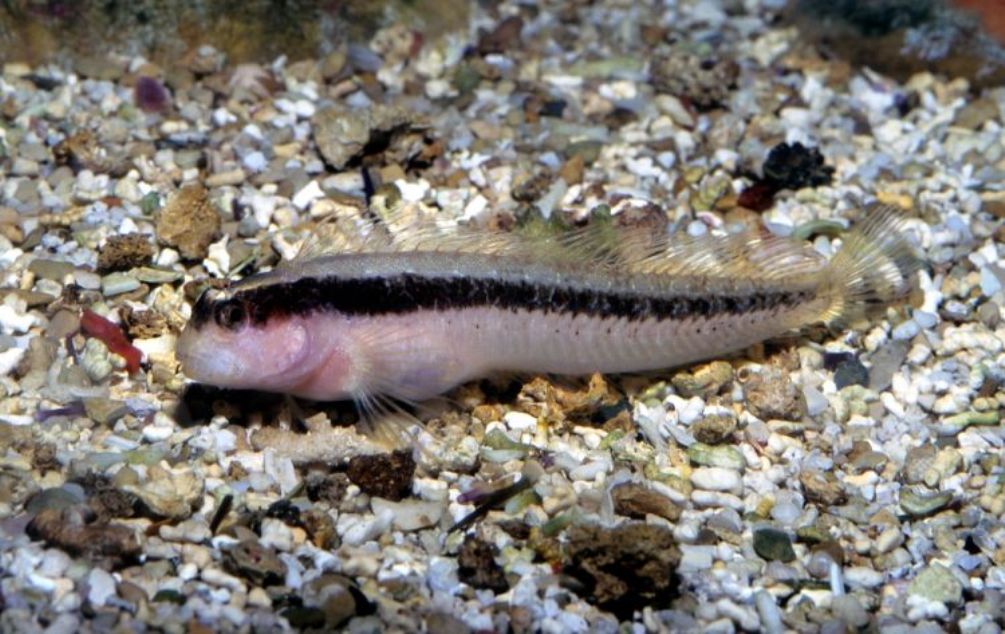Parablennius rouxi
Parablennius rouxi
The Longstriped blenny (Parablennius rouxi Cocco, 1833) is a small marine fish belonging to the Blenniidae family.
Systematics –
From a systematic point of view it belongs to:
Eukaryota Domain,
Kingdom Animalia,
Subarign Eumetazoa Bilateria,
Superphylum Deuterostomia,
Phylum Chordata,
Subphylum Vertebrata,
Infraphylum Gnathostomata,
Superclass Osteichthyes,
Actinopterygii class,
Perciformes order,
Suborder Blennioidei,
Blenniidae family,
Genus Parablennius,
P. rouxi species.
The term is synonymous:
– Blennius rouxi Coconut, 1833.
Geographic Distribution and Habitat –
The Longstriped blenny is a species in the northern Mediterranean Sea and in the Northeast Atlantic where it is present from Portugal to England. In the Italian seas it is also frequently found in the Strait of Messina.
Its habitat is that of depths from 3 to 10 m on stony and detrital bottoms near small ravines and cavities.
Description –
The Parablennius rouxi has a tapered body, thin and not very compressed laterally, which can reach 8 centimeters. Sexual dimorphism is almost absent with the male slightly larger than the female.
The body is typically white in color with a black longitudinal band, sometimes reddish, the muzzle bears some blue lines.
The skin is bare and the lateral line is barely visible.
It has an almost vertical front profile of the head and the eyes, large, are set high.
On the superciliary arches there are two dermal appendages with 5-6 six filaments. A small appendage is placed on the lower nostril.
The mouth is small, with full lips. In the mandibles there are thin cylindrical-conical teeth followed by two developed canines curved inwards.
The fins are transparent and the rays of the dorsal are spotted with red. Characteristic are the blue streaks that go down the muzzle to the upper lip. In breeding males, the tints become darker.
The only dorsal fin, devoid of indentation, is formed by spiny rays anteriorly and soft posteriorly. The anal is longer than half of the body and the first two rays are short. The caudal is rounded and the pectoral and ventral ones are broad.
Biology –
Parablennius rouxi is an oviparous species with a reproduction period that goes from May to July.
Females lay their eggs in a male’s den which holds eggs from different families.
Eggs are demersal and sticky and are attached to the substrate via a filamentous adhesive pad or pedestal
The larvae are planktonic, often found in shallow coastal waters.
Ecological Role –
Parablennius rouxi is a rather confident species that can be approached quite easily by divers. Its association with the Muraena helena has recently been observed; probably the little blenny is an occasional “cleaner” of the moray eel.
This fish feeds on perifiton, arpacticoids and algae. Males live in tight burrows and, during the pre-breeding phase, courting the female, nodding, jumping out of the hole and coming back and swimming upright. Rivals are threatened with yawns, side displays and turns in circles and are attacked by ramming and biting.
It is not an object of fishing.
Guido Bissanti
Sources
– Wikipedia, the free encyclopedia.
– Louisy P., 2016. Guide to the identification of marine fish of Europe and the Mediterranean. Il Castello Editore, Milan.
– Nikiforos G., 2008. Mediterranean fauna. Giunti Editore, Florence.
Photo source:
– https://www.biolib.cz/en/taxonimage/id180388/


